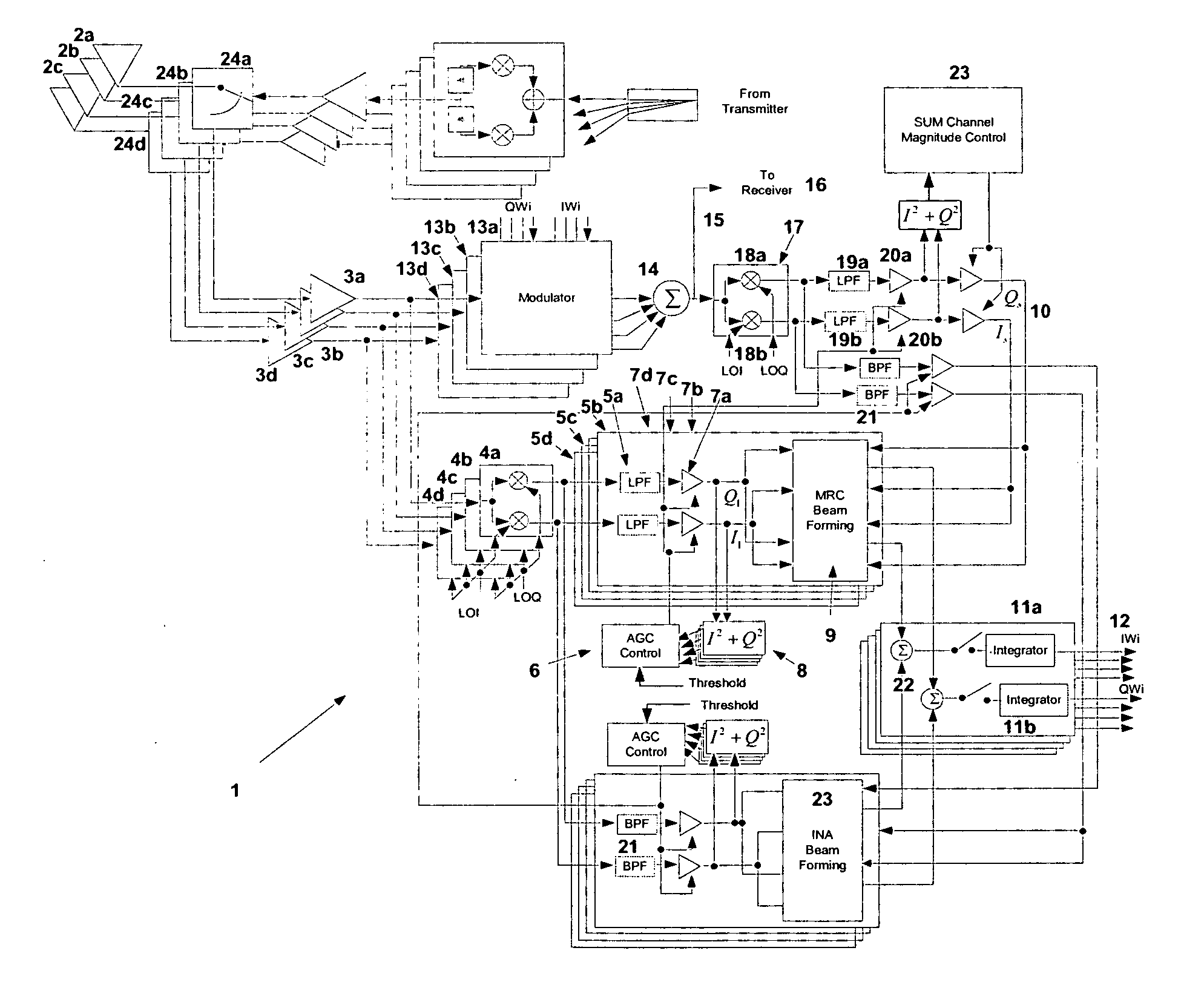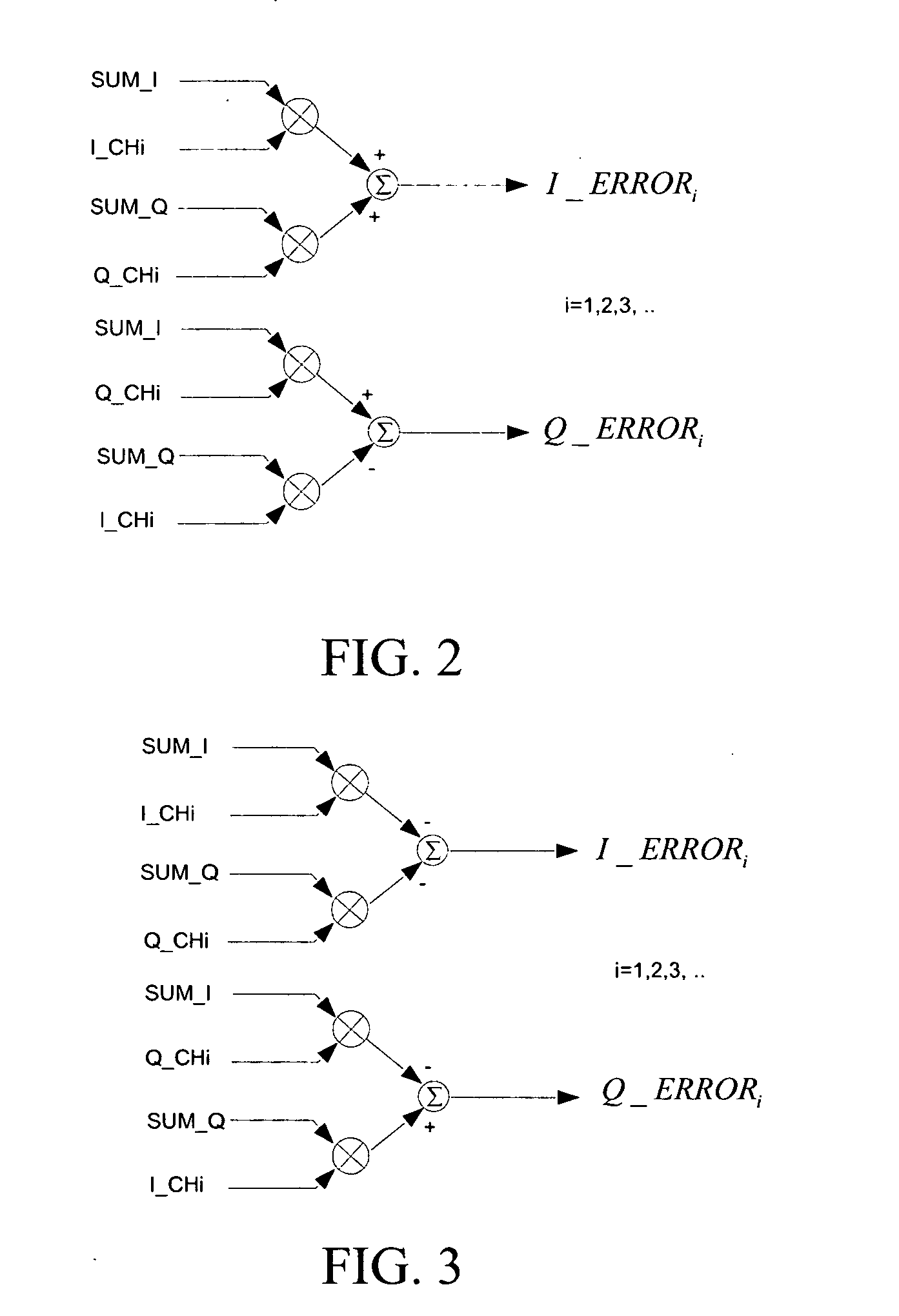Adaptive beam forming receiver
a beam forming receiver and beam technology, applied in the field of wireless communication systems, can solve the problems of multipath interference effects, wlan performance can be greatly degraded, wlans often fall short of the expected operating range, etc., and achieve the effect of simplifying the interface, facilitating adaptation to different signal formats and signal characteristics
- Summary
- Abstract
- Description
- Claims
- Application Information
AI Technical Summary
Benefits of technology
Problems solved by technology
Method used
Image
Examples
Embodiment Construction
[0044] Reference will now be made in greater detail to a preferred embodiment of the invention, an example of which is illustrated in the accompanying drawings. Wherever possible, the same reference numerals will be used throughout the drawings and the description to refer to the same or like parts.
[0045]FIG. 1 shows a conventional method for beamforming system disclosed in U.S. patent application Ser. No. 10 / 732,003, filed Dec. 10, 2003, Wireless Communication System Using a Plurality of Antenna Elements with Adaptive Weighting and Combining Techniques. It is an illustration of wireless receive beam forming system including closed loop implementation of MRC (maximal ratio combining) and INA (interference nulling algorithm) for performing simultaneously signal combining and interference cancellation. Within wireless receive beam forming system 1 is a plurality of antennas 2a-d and along which wireless receive beam forming system 1 may receive (or transmit) signals. In this example,...
PUM
 Login to View More
Login to View More Abstract
Description
Claims
Application Information
 Login to View More
Login to View More - R&D
- Intellectual Property
- Life Sciences
- Materials
- Tech Scout
- Unparalleled Data Quality
- Higher Quality Content
- 60% Fewer Hallucinations
Browse by: Latest US Patents, China's latest patents, Technical Efficacy Thesaurus, Application Domain, Technology Topic, Popular Technical Reports.
© 2025 PatSnap. All rights reserved.Legal|Privacy policy|Modern Slavery Act Transparency Statement|Sitemap|About US| Contact US: help@patsnap.com



